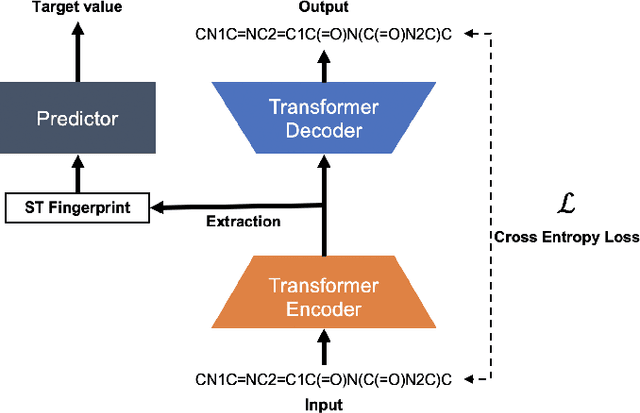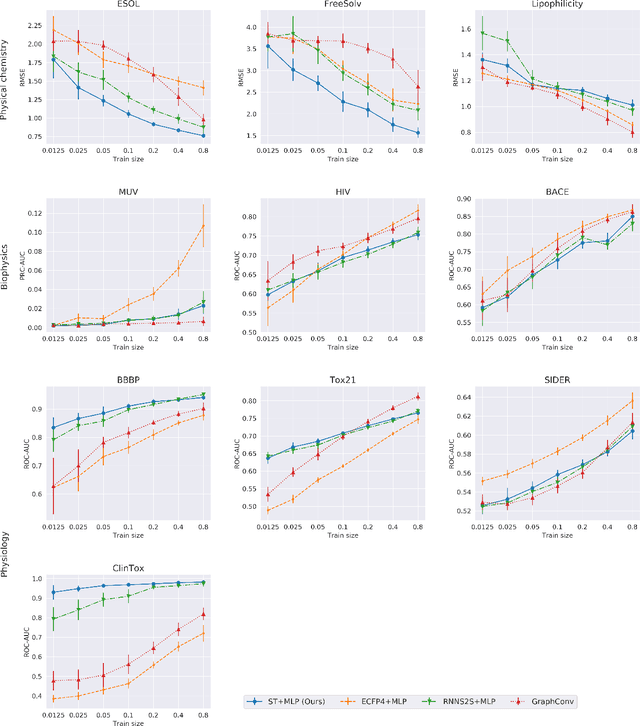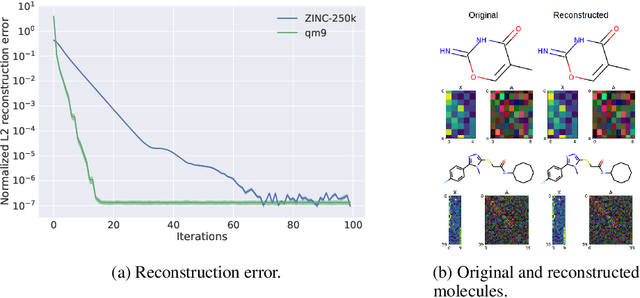Shion Honda
VITON-GAN: Virtual Try-on Image Generator Trained with Adversarial Loss
Nov 12, 2019


Abstract:Generating a virtual try-on image from in-shop clothing images and a model person's snapshot is a challenging task because the human body and clothes have high flexibility in their shapes. In this paper, we develop a Virtual Try-on Generative Adversarial Network (VITON-GAN), that generates virtual try-on images using images of in-shop clothing and a model person. This method enhances the quality of the generated image when occlusion is present in a model person's image (e.g., arms crossed in front of the clothes) by adding an adversarial mechanism in the training pipeline.
* 2 pages, 4 figures. Accepted to Eurographics 2019 (Posters)
SMILES Transformer: Pre-trained Molecular Fingerprint for Low Data Drug Discovery
Nov 12, 2019



Abstract:In drug-discovery-related tasks such as virtual screening, machine learning is emerging as a promising way to predict molecular properties. Conventionally, molecular fingerprints (numerical representations of molecules) are calculated through rule-based algorithms that map molecules to a sparse discrete space. However, these algorithms perform poorly for shallow prediction models or small datasets. To address this issue, we present SMILES Transformer. Inspired by Transformer and pre-trained language models from natural language processing, SMILES Transformer learns molecular fingerprints through unsupervised pre-training of the sequence-to-sequence language model using a huge corpus of SMILES, a text representation system for molecules. We performed benchmarks on 10 datasets against existing fingerprints and graph-based methods and demonstrated the superiority of the proposed algorithms in small-data settings where pre-training facilitated good generalization. Moreover, we define a novel metric to concurrently measure model accuracy and data efficiency.
Graph Residual Flow for Molecular Graph Generation
Sep 30, 2019



Abstract:Statistical generative models for molecular graphs attract attention from many researchers from the fields of bio- and chemo-informatics. Among these models, invertible flow-based approaches are not fully explored yet. In this paper, we propose a powerful invertible flow for molecular graphs, called graph residual flow (GRF). The GRF is based on residual flows, which are known for more flexible and complex non-linear mappings than traditional coupling flows. We theoretically derive non-trivial conditions such that GRF is invertible, and present a way of keeping the entire flows invertible throughout the training and sampling. Experimental results show that a generative model based on the proposed GRF achieves comparable generation performance, with much smaller number of trainable parameters compared to the existing flow-based model.
 Add to Chrome
Add to Chrome Add to Firefox
Add to Firefox Add to Edge
Add to Edge